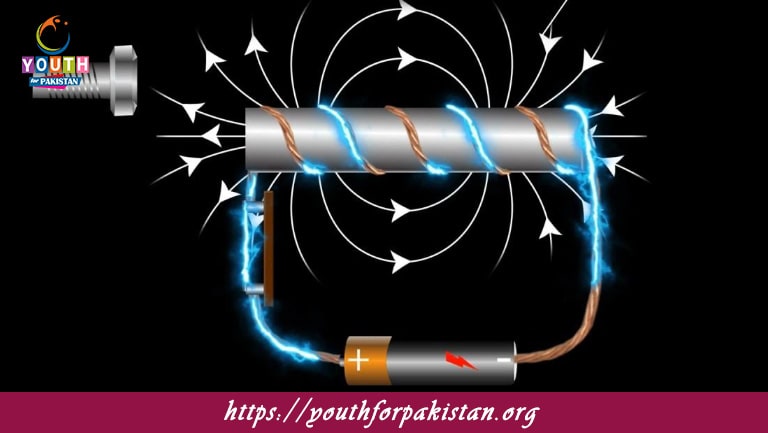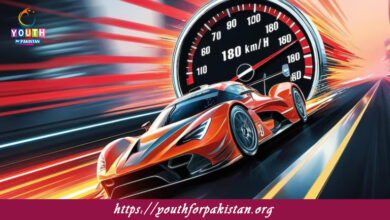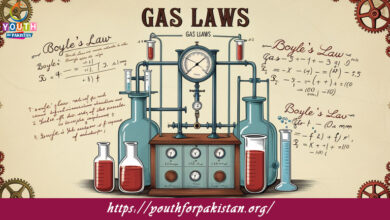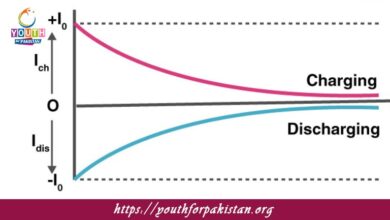Electromagnetism MDCAT MCQs with Answers

Welcome to the Electromagnetism MDCAT MCQs with Answers. In this post, we have shared Electromagnetism Multiple Choice Questions and Answers for PMC MDCAT 2024. Each question in MDCAT Physics offers a chance to enhance your knowledge regarding Electromagnetism MCQs in this MDCAT Online Test.
Electromagnetism MDCAT MCQs Test Preparations
What is the unit of electric current?
a) Volt
b) Ohm
c) Ampere
d) Watt
What does the term ‘electromotive force’ (EMF) refer to?
a) The resistance in a circuit
b) The potential difference across a circuit
c) The work done per unit charge
d) The rate of current flow
In a parallel circuit, the voltage across each resistor is:
a) Different
b) Zero
c) Same
d) Half
The magnetic field inside a solenoid is:
a) Zero
b) Uniform
c) Variable
d) Constant only at the ends
The direction of the magnetic field around a current-carrying wire can be determined by:
a) Ampere’s law
b) Faraday’s law
c) Fleming’s right-hand rule
d) Fleming’s left-hand rule
What is the principle behind a transformer?
a) Electromagnetic induction
b) Magnetic resonance
c) Electrolysis
d) Faraday’s law
In Ohm’s Law, V = IR, what does V represent?
a) Voltage
b) Current
c) Resistance
d) Power
The force experienced by a charged particle moving in a magnetic field is given by:
a) F = qE
b) F = qvB
c) F = qvE
d) F = qv^2B
The unit of magnetic flux is:
a) Weber
b) Tesla
c) Newton
d) Ampere
Faraday’s law of electromagnetic induction states that:
a) The EMF induced is proportional to the rate of change of magnetic flux
b) The EMF induced is inversely proportional to the rate of change of magnetic flux
c) Magnetic flux is proportional to electric field
d) Electric current is proportional to resistance
What is the SI unit of magnetic field strength?
a) Weber
b) Tesla
c) Gauss
d) Henry
A current-carrying conductor experiences maximum force when:
a) It is parallel to the magnetic field
b) It is perpendicular to the magnetic field
c) It is at a 45-degree angle to the magnetic field
d) It is coiled into a solenoid
The magnetic field inside a current-carrying coil is:
a) Zero
b) Variable
c) Uniform
d) Dependent on the wire material
The right-hand rule for a current-carrying wire tells you the direction of:
a) Current
b) Electric field
c) Magnetic field
d) Potential difference
What is the role of a capacitor in an AC circuit?
a) To increase the current
b) To block DC and allow AC
c) To decrease the voltage
d) To increase resistance
An inductor in an AC circuit:
a) Acts as a resistor
b) Blocks AC
c) Stores energy in a magnetic field
d) Converts AC to DC
The term ‘magnetic flux’ is used to describe:
a) The strength of a magnetic field
b) The number of magnetic field lines passing through an area
c) The rate of change of magnetic field
d) The force between two magnets
The unit of electric field strength is:
a) Volt
b) Newton per Coulomb
c) Ampere
d) Ohm
The phenomenon where a changing magnetic field induces an EMF is known as:
a) Electromagnetic induction
b) Electrostatic induction
c) Electromagnetic resonance
d) Electrodynamics
The relationship between electric field (E) and magnetic field (B) in an electromagnetic wave is:
a) E = B
b) E = B^2
c) E = cB
d) E = B/c
The potential difference across a capacitor is proportional to:
a) The rate of change of current
b) The capacitance
c) The magnetic field
d) The length of the capacitor plates
The term ‘self-inductance’ refers to:
a) Inductance due to a changing magnetic field of another coil
b) The ability of a coil to resist changes in current
c) The capacitance of a coil
d) The magnetic flux produced by a coil
The formula for the force between two parallel conductors carrying current is:
a) F = μ₀I₁I₂d
b) F = μ₀I₁I₂/r
c) F = μ₀I₁I₂L
d) F = μ₀I₁I₂L/d
The energy stored in an inductor is given by:
a) E = ½CV²
b) E = ½LI²
c) E = V²/R
d) E = ½mV²
The magnetic field at the center of a circular loop of radius r carrying current I is:
a) B = μ₀I/2r
b) B = μ₀I/4πr
c) B = μ₀I/2πr
d) B = μ₀I/πr
The direction of current flow is opposite to the direction of:
a) Electron flow
b) Proton flow
c) Magnetic field
d) Electric field
The induced EMF in a coil is zero if:
a) The magnetic field is constant
b) The coil is stationary
c) The coil is short-circuited
d) The current through the coil is constant
The magnetic force on a current-carrying conductor in a magnetic field is maximized when:
a) The angle between the conductor and the magnetic field is 90 degrees
b) The conductor is parallel to the magnetic field
c) The magnetic field is zero
d) The current is minimized
In an AC circuit, the phase difference between the voltage and current in an inductive circuit is:
a) 0 degrees
b) 90 degrees
c) 180 degrees
d) 45 degrees
The unit of electrical resistance is:
a) Volt
b) Ampere
c) Ohm
d) Watt
The magnetic field at the center of a solenoid is:
a) Zero
b) Uniform and proportional to the current
c) Variable and proportional to the length
d) Uniform and proportional to the voltage
The magnetic force between two parallel conductors carrying currents in the same direction is:
a) Attractive
b) Repulsive
c) Zero
d) Alternating
The direction of the induced current according to Lenz’s Law is:
a) Opposite to the direction of the applied magnetic field
b) The same as the direction of the applied magnetic field
c) Perpendicular to the magnetic field
d) Unpredictable
The formula for the magnetic field around a straight current-carrying conductor is:
a) B = μ₀I/2πr
b) B = μ₀I/πr
c) B = μ₀I/4πr
d) B = μ₀I/r
The principle behind the operation of an electric motor is based on:
a) Magnetic resonance
b) Electromagnetic induction
c) Electromagnetic force
d) Electrostatic force
The magnetic field produced by a bar magnet is:
a) Uniform
b) Non-uniform
c) Radial
d) Null
The self-inductance of a solenoid is proportional to:
a) The current through it
b) The square of the number of turns
c) The length of the solenoid
d) The magnetic field strength
In a transformer, if the number of turns in the secondary coil is greater than in the primary coil, the transformer is a:
a) Step-up transformer
b) Step-down transformer
c) Isolation transformer
d) Resonant transformer
The phenomenon where an electric field induces a magnetic field is known as:
a) Electromagnetic induction
b) Magnetic induction
c) Electrodynamics
d) Electrostatic induction
The magnetic force on a moving charge is at a maximum when the velocity of the charge is:
a) Parallel to the magnetic field
b) Perpendicular to the magnetic field
c) Opposite to the magnetic field
d) Zero
If you are interested to enhance your knowledge regarding Physics, Chemistry, Computer, and Biology please click on the link of each category, you will be redirected to dedicated website for each category.




